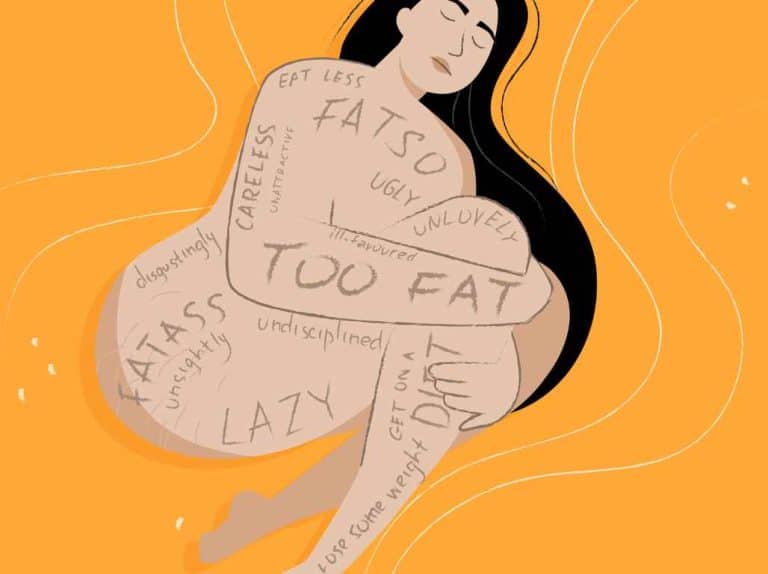Did You Know That Body Image Disorders Can Lead To Addiction
Research indicates that perceptions about one’s weight and appearance, particularly poor body image, is a precursor to substance abuse. Societal pressures to look a certain way push many people to rely on unhealthy ways to have an ideal appearance. But what is the relationship between body image and addiction? Let’s look at substance abuse, how it’s influenced by body image and possible treatment options.
What is Substance Abuse
The definition of substance abuse is that it involves the use of illicit substances, prescription drugs, or alcohol in excessive amounts or for purposes other than for which they should be used. Substance abuse problems can be physical, psychological, social, and even financial in nature. In the USA, drug use statistics show that 1 in 8 adults struggle with drug and alcohol abuse problems.
Substance Use Disorders
According to the National Institute of Health, substance use disorder impacts a person’s brain and behavior in a way that they can no longer control the use of illegal drugs, prescription medication, or alcohol. The main features of substance use disorder include compulsion, cravings, consequences, and (lack of) control. In 2021, the Substance Abuse and Mental Health Services Administration found that over 20 million people over the age of 12 had a substance use disorder in the last year.
Types of Substance Abuse From Body Image Disorders
The most common types of drug abuse are as follows:
Alcohol
Alcohol is the most used substance in the world and has a negative impact on brain and behavioral functions. Alcohol has a depressant effect, which slows down functioning in the central nervous system, effectively reducing the number of stressful or anxious thoughts. Some people may use alcohol as a way to self-medicate for their mental health concerns as well. However, it can quickly lead to dependence, which results in dangerous withdrawal symptoms if broken.
Opioids
Opioid drug addiction includes illicit substances like heroin, as well as prescription medication like oxycodone or methadone, which are the most common opioids. These substances are made from natural opium or a synthetic version that binds to the receptors in the same way. By interacting with neurotransmitters, opioids block pain signals from reaching the brain. Besides reducing pain, they induce a euphoric effect that makes them very addictive.
Sedatives and Hypnotics
Barbiturates slow down the brain’s functioning and are a class of sedative-hypnotics used for sleep problems and psychotic disorders. Meanwhile, benzodiazepines interact with GABA, a neurotransmitter in the brain, for a sedating effect. Although both these drugs work differently, they both have similar purposes and are prescribed for similar types of conditions.
Cannabis
Cannabis, such as marijuana, causes a signature high due to the active ingredient THC. When this compound interacts with the brain, it creates feelings of euphoria and hampers decision-making. People may also have difficulty forming coherent sentences. Despite being among the most used substances, cannabis shows the lowest risk of dependence.
Cocaine
This category includes other stimulants such as methamphetamine as well. You can take stimulants like cocaine by snorting it in powdered form or smoking crack cocaine, and it triggers pleasure centers by affecting the brain’s ventral tegmental area. Frequent use can decrease the activity of the brain’s natural transmitters, causing a complete loss of pleasure without the substance.
Hallucinogens
This class includes drugs like LSD, psilocybin, and DMT, which are taken recreationally to alter your perception of reality. Hallucinogens can heighten the user’s awareness, allowing them to experience new forms of consciousness. For instance, you may start seeing things that aren’t there or have an out-of-body experience.
What is Body Image
Your body image is the way you think and feel about your body. You can have positive or negative feelings, and this can differ from time to time. Internal factors, such as personality, and external factors, such as the environment, can influence your body image.
Your body image is divided into four aspects. These are:
- Perceptual: how you see your body
- Affective: how you feel about your body
- Cognitive: how you think about your body
- Behavioral: how you behave because of your body image
Having a positive body image means that you’re able to accept and respect your body, even if there are some aspects you’re dissatisfied with. People with a positive body image have improved self-esteem and self-acceptance. Professionals at United Recovery CA can help you identify body image issues and overcome them.
Body Image Disorders
When people have negative feelings about their bodies, they have a poor negative body image. Body dissatisfaction is an internal process but is also affected by external influences, such as pressure to look a certain way. Severe body dissatisfaction can push people to attempt unhealthy measures, such as disordered eating, to control their weight.
Poor body image is among the main risk factors for an eating disorder. People who don’t meet the formal criteria for an eating disorder may show some subclinical eating disorder symptoms, like spending a lot of time trying to lose weight, having low self-esteem, and consistently thinking about diets. Some people also develop an exercise addiction because of their strict weight control strategy. Additionally, some people may use drugs as a way to cope with the pressures of looking a certain way, which can have a negative effect on their mental health.
Body Image Disorders: Dysmorphia
Persistently having negative thoughts about your body can lead to body dysmorphic disorder. Also known as body dysmorphia, it’s a mental health condition characterized by spending an unhealthy amount of time worrying about the flaws in your appearance. The condition affects people of all ages but is more common in adolescents.
Body Image Disorders and Drug Use
Historically, one of the most common reasons that people have used substances is to control their weight and maintain their appearance. Statistics show that women with eating disorders have a higher likelihood of abusing substances. Up to 18 percent of adults with anorexia nervosa and 70 percent of adults with bulimia nervosa have a substance use disorder. Drugs like cocaine can suppress the appetite, which allows you to skip meals but increases sugary cravings. Some people turn to drugs or alcohol abuse as a way to distract themselves from hunger.
Body Image Disorders and Addiction Treatment
Using substances as a way to reduce your appetite is an unhealthy approach to weight loss. If you’re struggling with substance use disorder because of poor body image, you’re at a higher risk of other issues and require professional addiction treatment.
Our rehab center can address body image issues and substance abuse through a holistic approach. This effective method addresses substance abuse while using treatment strategies to uncover the causes behind your drug-taking behavior. So if you have an addiction to a substance like cocaine, a treatment center will not only address your drug-taking habits but also uses therapies to address your body image issues. Therapists also suggest coping techniques to help deal with negative feelings or thoughts about your body. Similarly, you’ll receive guidance on better ways to maintain a healthy weight, along with affirming strategies to improve your body image.
FAQs About Body Image Disorders
Some of the commonly asked questions about substance misuse and body image are as follows.
How does drug use relate to body image?
People with poor body image may use certain substances like stimulants to suppress appetite and reduce weight.
What percentage of the smoking female population struggles with body dysmorphia?
Studies show that around 21.2 percent of smokers have body dysmorphia.
What are the 6 types of substance abuse disorders?
The 6 types of substance abuse include opioids, cocaine, sedative-hypnotics, cannabis, alcohol, and hallucinogens.
What are 4 different forms of addiction?
The 4 Cs of addiction are compulsion, cravings, consequences, and control.
More Articles To Read About Your Body
Learn To Recognize The Effects of Depression in Your Body
Myths About Addiction And What Makes Recovery Work
How Psoriasis Affects Self-Esteem and Body Image
Surprising Most Damaging Age For Drinking Alcohol
7 Ways To Raise Your Vibration





















